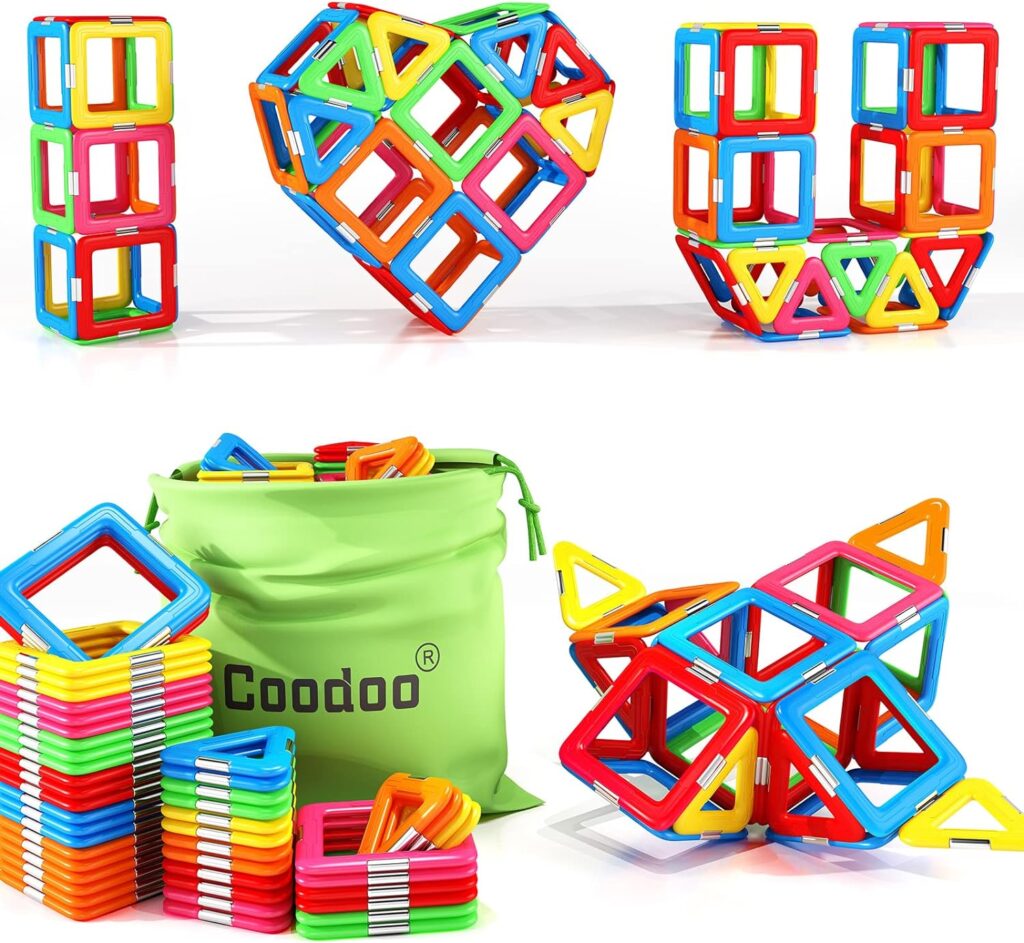In today’s rapidly advancing world, nurturing children’s interest in science, technology, engineering, and mathematics (STEM) is crucial. STEM toys not only engage young minds but also foster creativity, problem-solving skills, and a deeper understanding of scientific concepts. From magnetic blocks to 3D pen sets, each toy offers unique benefits that contribute to a child’s development. In this article, we explore 7 captivating STEM toys for kids, their educational benefits, and why they are essential for every young explorer’s toy collection.
Magnetic Blocks: Building the Foundations of Creativity

Magnetic blocks are not just ordinary building blocks; they are a gateway to limitless creativity and exploration.
These toys typically consist of magnetic shapes that effortlessly snap together, allowing children to construct various structures, from simple towers to intricate geometric forms. The magnets’ attraction and repulsion principles introduce basic physics concepts at an early age, such as polarity and magnetic fields.
Moreover, manipulating these blocks enhances fine motor skills and spatial awareness, essential for both academic and everyday tasks.
Gravity Maze Marble Run: Hands-On Problem Solving in Motion

A gravity maze marble run combines physics with strategic thinking and problem-solving. This toy challenges children to design and build intricate marble tracks that guide a marble from start to finish using gravity and momentum.
As kids experiment with different track configurations, they learn about concepts like gravity, slope angles, and kinetic energy.
Moreover, solving maze challenges fosters critical thinking, spatial reasoning, and patience—a perfect blend of fun and learning that keeps young minds engaged for hours.
Magnetic Tiles: Exploring Structural Integrity and Design

Magnetic tiles are another favorite among STEM toys for their versatility and educational value. These tiles feature magnets along their edges, allowing children to create sturdy 3D structures like buildings, bridges, and vehicles.
The tactile experience of assembling and disassembling tiles promotes problem-solving skills and understanding of balance and symmetry.
Additionally, experimenting with magnetic forces helps children grasp fundamental principles of engineering and architecture in a hands-on, intuitive manner.
Lego Gear Bots: Engineering Marvels in Motion

Lego gear bots take traditional Lego building to the next level by incorporating mechanical movement and engineering principles. These kits include gears, axles, and motors that children use to construct robots capable of performing specific actions, such as walking or lifting objects.
Assembling gear bots encourages logical thinking, sequential reasoning, and understanding of mechanical systems.
Moreover, programming simple movements enhances computational thinking skills—a precursor to mastering technology in the digital age.
Solar Power Robots: Harnessing Renewable Energy for Fun and Learning

Solar power robots exemplify the intersection of sustainability and technology education. These kits typically include solar panels and components to build robots that move or perform tasks when exposed to sunlight.
By assembling and experimenting with solar-powered mechanisms, children learn about renewable energy sources, photovoltaic technology, and environmental sustainability.
Furthermore, understanding how solar energy converts into mechanical motion fosters curiosity about alternative energy solutions and their role in shaping our future.
Wooden Block Puzzles: Building Cognitive and Fine Motor Skills

Wooden block puzzles are timeless toys that promote cognitive development and fine motor skills. These puzzles often feature geometric shapes that children must fit into corresponding slots or patterns.
Solving these puzzles enhances spatial reasoning, shape recognition, and hand-eye coordination—skills crucial for early academic success.
Additionally, the tactile sensation of manipulating wooden blocks provides sensory stimulation and reinforces concepts like size, symmetry, and spatial relationships in a tangible, engaging way.
3D Pen Set: Sculpting Imagination with Modern Technology

A 3D pen set introduces children to the world of three-dimensional art and design through innovative technology. These pens extrude heated plastic that quickly solidifies, allowing users to create freehand sculptures, models, and intricate designs.
Using a 3D pen promotes creativity, spatial visualization, and artistic expression, as children bring their ideas to life in a tangible form.
Moreover, experimenting with different shapes and structures encourages problem-solving and understanding of basic engineering principles, such as geometry and structural integrity.
Conclusion: Embracing STEM Toys as Tools for Future Success
In conclusion, STEM toys are not merely playthings; they are powerful educational tools that inspire curiosity, creativity, and a love for learning.
From magnetic blocks and gravity maze marble runs to solar power robots and 3D pen sets, each toy offers unique opportunities for children to explore scientific concepts, hone critical thinking skills, and cultivate a passion for innovation.
By integrating these toys into children’s playtime and educational activities, parents and educators can nurture young minds and prepare them for a future where technological literacy and problem-solving abilities are paramount.
Let’s empower the next generation of innovators and thinkers through the joy of STEM exploration—one toy at a time.
Related Top 5 Autism Sensory Toys for Kids Top 7 Tummy Time Toys Top Athlete Toys for Active Kids




